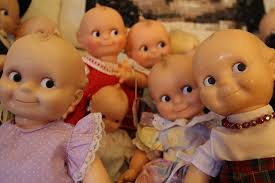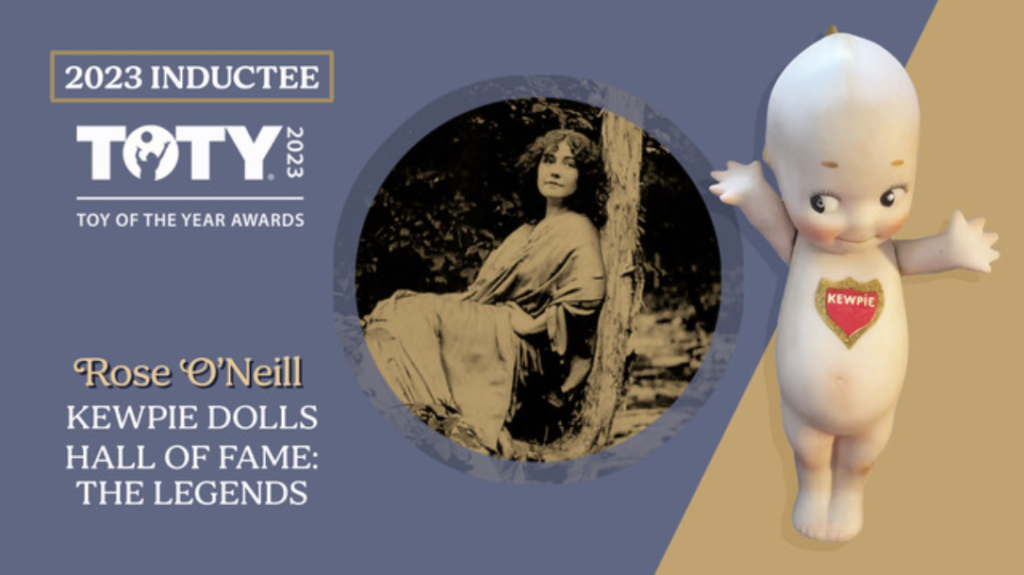The Fascinating World of Kewpie Dolls:
A Collector’s Guide
Kewpie dolls are more than enchanting toys; they might be famous pieces of records with profound social importance. From their whimsical look to their storied past, Kewpie dolls have captured the hearts of lenders and fans for over a century. This text explores the rich information, particular characteristics, and the thriving collector community surrounding Kewpie dolls. Whether you’re a pro collector or beginning to explore this pleasant global, this manual will offer you the whole lot you need to realize about Kewpie dolls.
Table of Contents
The Origin and History of Kewpie Dolls
Kewpie dolls originated in the early twentieth century, created by the American illustrator Rose O’Neill. The person, called “Kewpie,” first appeared in comedian strips in 1909, where it briefly gained a reputation due to its cherubic, angel-like look. O’Neill’s Kewpies were not truly characters; they were messengers of love and pleasure, embodying the artist’s notion of spreading happiness and goodwill.
In 1912, the number one Kewpie dolls had been artificial in Germany, crafted from bisque, a kind of porcelain. These early dolls have been a hit right now, and I love their perfect format—chubby cheeks, considerable eyes, and an exclusive top knot of hair. Over the years, the manufacturing of Kewpie dolls expanded, with versions made from composition, celluloid, rigid plastic, and vinyl. Each fabric marked an exquisite generation in the doll’s records, which include layers of complexity and fee to the area of the Kewpie doll amassing.
The Unique Characteristics of Kewpie Dolls



What sets Kewpie dolls apart from other collectable dolls is their unmistakable layout. These dolls are easily recognized with their spherical faces, huge eyes, and small, cupid-like
smiles. They regularly have a tiny tuft of hair on their heads, and their bodies are generally obese, giving them an infant-like appearance that is both endearing and undying.
Kewpie dolls are available in various sizes, from some inches tall to over a foot. They are often posed with their arms outstretched as though carrying out for a hug. Some Kewpies also feature movable limbs, allowing for a variety of playful poses. The dolls are painted in clean pastel colours, with delicate statistics decorating their harmless and happy
expressions.
One of the most sought-after functions in antique Kewpie dolls is the presence of a blue wing decal on their backs, a photograph of authenticity and a hallmark of early production
fashions. Collectors moreover price Kewpie dolls that maintain their unique apparel and accessories, as those upload massive prices to the doll.
The Cultural Impact of Kewpie Dolls
Beyond their popularity as loved toys, Kewpie dolls have had a huge impact on the famous way of life. In the 1920s and 1930s, they became a symbol of the American suffragette movement, with women wearing Kewpie dolls at some point in marches and protests as symbols of purity and innocence. This affiliation with social activism gave the dolls an additional layer of meaning, connecting them to broader cultural and political actions.
Kewpie dolls have also been featured in numerous media, including books, films, and advertisements. Their photos have been used to sell everything from meals to cosmetics, further cementing their popularity as cultural icons. The doll’s call inspired the well-known Japanese Kewpie mayonnaise, recognized for its unique taste and packaging.
Collecting Kewpie Dolls:
What You Need to Know
There are numerous factors to consider for those interested in amassing Kewpie dolls. A doll’s age, fabric, scenario, and rarity all play essential roles in determining its cost.
Antique bisque Kewpies from the early 1900s are among the most measured, mainly the ones that need to be in incredible air conditioning to preserve their particular features.
When shopping for a Kewpie doll, it’s crucial to be aware of reproductions and modern-day replicas. While those can be captivating in their own right, they do not cost the same as vintage or vintage dolls. Collectors want to search for dolls with clean markings, including the “O’Neill” signature or the presence of a manufacturer’s stamp, to ensure authenticity.
Joining a collector’s group or attending a doll can be precious for every beginner and experienced creditor. These businesses provide a wealth of knowledge and opportunities to accumulate new pieces in your series. Additionally, online marketplaces and auction sites offer a wide variety of Kewpie dolls, although customers have to exercise caution and conduct thorough research before making a purchase.
The Future of Kewpie Dolls
As we bypass similarly into the twenty-first century, the appeal of Kewpie dolls indicates no signs and symptoms and signs of fading. They remain well-known among collectors, with costs for uncommon and properly preserved dolls progressively growing. The ongoing fascination with those dolls is a testament to their undying appeal and the enduring legacy of Rose O’Neill’s creation.
In recent years, there has been a resurgence of interest in vintage subjects, and Kewpie dolls are no exception. This fashion has brought a modern-day era of creditors to the arena of Kewpies, ensuring that the way of life of collecting those best dolls will continue for future years.
Conclusion
Kewpie dolls are more than a bit of collectable memorabilia; they are an image of pleasure, love, and cultural history. Whether you are interested in them for their fascinating format, their historical importance, or their function in famous culture, Kewpie dolls provide something for everybody.
By understanding their records, recognizing their precise traits, and knowing what to look for as a collector, you may genuinely admire the magic of Kewpie dolls and possibly even start a set of your non-public.
FAQs approximately Kewpie Dolls
What does the Kewpie doll signify?
The Kewpie doll symbolizes innocence, pleasure, and love. Originally created as a messenger of goodwill, the doll’s cherubic look and playful demeanour embody superb emotions, symbolising happiness and purity.
What is the Kewpie doll principle?
The “Kewpie doll concept” isn’t a notably identified concept in mainstream discourse, but it now and again refers back to the concept that people are interested in gadgets or beings with toddler-like features (like huge eyes and round faces) because they evoke a nurturing reaction. This is much like the idea of “baby schema” in psychology, in which capabilities that resemble the ones of toddlers cause care and affection.
Why is it referred to as a Kewpie doll?
The Kewpie doll is named after “Cupid,” the Roman god of affection, due to its playful and loving nature. “Kewpie” is a cutesy version of “Cupid,” reflecting the doll’s whimsical and endearing developments.
Are Kewpie dolls nevertheless made?
Yes, Kewpie dolls are made nowadays despite advanced production strategies and materials. Modern Kewpie dolls are frequently crafted from vinyl or plastic, and their layout stays dedicated to unique creations in the manner of Rose O’Neill.
What is the Japanese doll for pregnancy?
In Japan, the “Dogū” doll, additionally called a fertility doll, is historically associated with pregnancy and childbirth. Another famous fertility doll is the “Kokeshi” doll, which is thought to carry authentic luck and protection to pregnant ladies.
Why is the Kewpie emblem a toddler?
The Kewpie logo features a toddler, representing the doll’s unique person—a cherubic, cupid-like parent. The toddler imagery conjures up emotions of innocence, love, and joy, aligning with the brand’s values and attraction.
What is the psychology behind dolls?
The psychology behind dolls is complicated and varies depending on cultural context. Dolls represent consolation, companionship, and a tool for innovative play in early life. For adults, dolls like Kewpie can constitute nostalgia and a connection to the past. In some cultures, dolls additionally have ritualistic and symbolic meanings.
Who invented Kewpie?
Kewpie dolls were invented by Rose O’Neill, an American illustrator and writer, in 1909. She first used the Kewpie man or woman in magazine illustrations before the dolls were produced.
What does the call Kewpie suggest?
“Kewpie” is derived from “Cupid,” the Roman god of love. The call displays the doll’s motive as a symbol of love and joy, with a playful twist at the conventional illustration of
Cupid.
What is unique about Kewpie?
What makes Kewpie dolls special is their particular design, cultural importance, and the statistics behind them. They aren’t toys but symbols of technology and icons in popular tradition. Their excellent look, with extensive eyes, a small smile, and a tuft of hair, makes them right away recognizable and loved by the aid of creditors.
Is Kewpie a female or a boy?
Kewpie dolls are regularly portrayed as gender-impartial, embodying a cherubic, angel-like determine rather than a tremendously male or female man or woman. This ambiguity contributes to their widespread enchantment.
What do dolls characterize in Japan?
In Japan, dolls signify a selection of things, from protection and suited fortune to creative expression. Traditional dolls like Hina dolls are utilized in ceremonies, at the same time as others like Kokeshi dolls, which take into consideration accurate success charms. Dolls can also constitute spirits or ancestors in certain rituals.
What does a Kewpie appear like?
A Kewpie doll is characterized by its valuable resources: its overweight, spherical face, massive eyes, small, cupid-like smile, and a tuft of hair on the pinnacle of its head. The body is usually plump and baby-like, frequently posed with hands outstretched as though accomplishing a hug.
Which United States of America is Kewpie from?
Kewpie dolls were created in the United States with Rose O’Neill’s help; however, the first dolls were manufactured in Germany in 1912. Today, Kewpie dolls are famous worldwide and have vast cultural relevance in both Western and Japanese cultures.